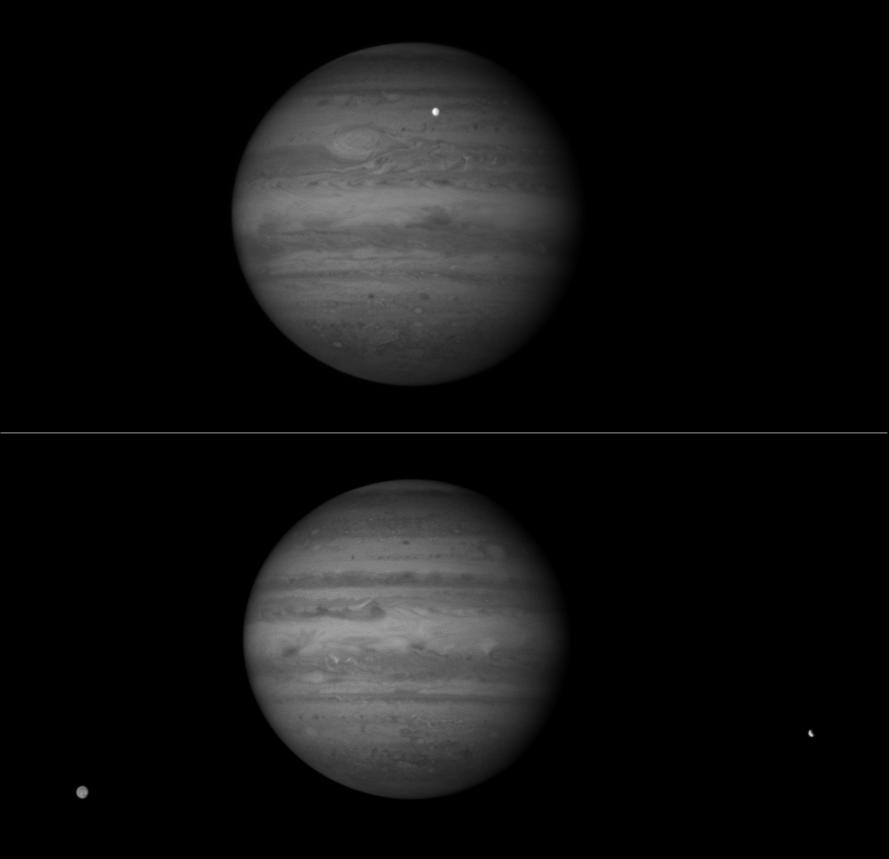| The Cassini-Huygens mission |

These two images were taken through the narrow angle camera in the near-infrared region of the electromagnetic spectrum centered at a wavelength of 727 nanometers. The upper image was taken from a distance of 69.9 million km on October 17, 2000; the lower from a distance of 65.1 million km on October 22, 2000. In both cases, the spacecraft was about 3.3 degrees above Jupiter's equator plane; the Sun-Jupiter-spacecraft angle was about 20 degrees. The 727 nanometer filter accepts only a narrow spectral range centered on a relatively strong absorption feature due to methane gas. In this spectral region, the amount of light reflected by Jupiter's clouds is only half that reflected in a nearby spectral region outside the methane band.
The features that are brightest in these images are the highest and thickest clouds, like the Great Red Spot and the band of clouds girding the equator, as these scatter sunlight back to space before it has a chance to be absorbed by the methane gas in the atmosphere. This stratigraphic effect can be seen even more prominently in the image released on October 23, 2000, taken in the stronger methane band at 889 nanometers, in which the only bright features are the highest hazes over the equator, the poles and the Great Red Spot. By comparing images taken in the 727 nanometer filter, with those taken in the stronger methane band at 889 nanometers and a weaker one at 619 nanometers, we will be able to probe the heights and thickness of clouds in Jupiter's atmosphere.
Both images capture the Galilean satellite Europa, a Moon-sized icy satellite of Jupiter, at different phases in its orbit around Jupiter. (The upper image also captures Ganymede, larger than the planet Mercury and already showing distinct brightness variations across its surface.) In the upper image, Europa is caught entering Jupiter's shadow, and hence appears as a bright crescent; in the lower image, it is seen about 1.5 orbits later, in transit across the face of the planet. Because there is neither methane nor any strong absorber in this spectral region on the surface of Europa, it appears strikingly white and bright compared to Jupiter. Imaging observations of Europa (and Io and Ganymede) entering and passing through Jupiter's shadow are planned for the two week period surrounding closest approach on December 30, 2000. The purpose of these eclipse observations is to detect and measure the temporal variability of the emissions that arise from the interaction of a tenuous satellite atmosphere with the charged particles trapped in Jupiter's magnetic field.
Credit: NASA/JPL/University of Arizona
Released: November 6, 2000
[NASA/JPL/Space Science Institute]
 ALPO-Japan Latest
ALPO-Japan Latest

 Jupiter2000 Apparition
Jupiter2000 Apparition